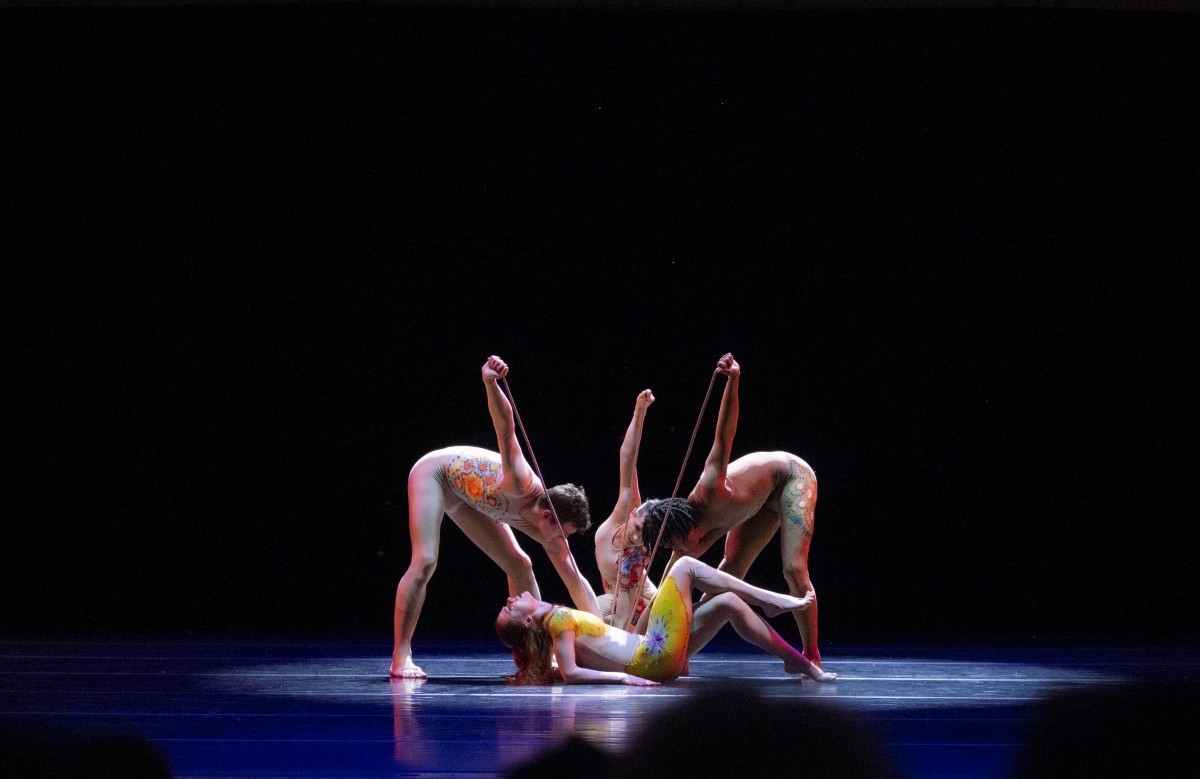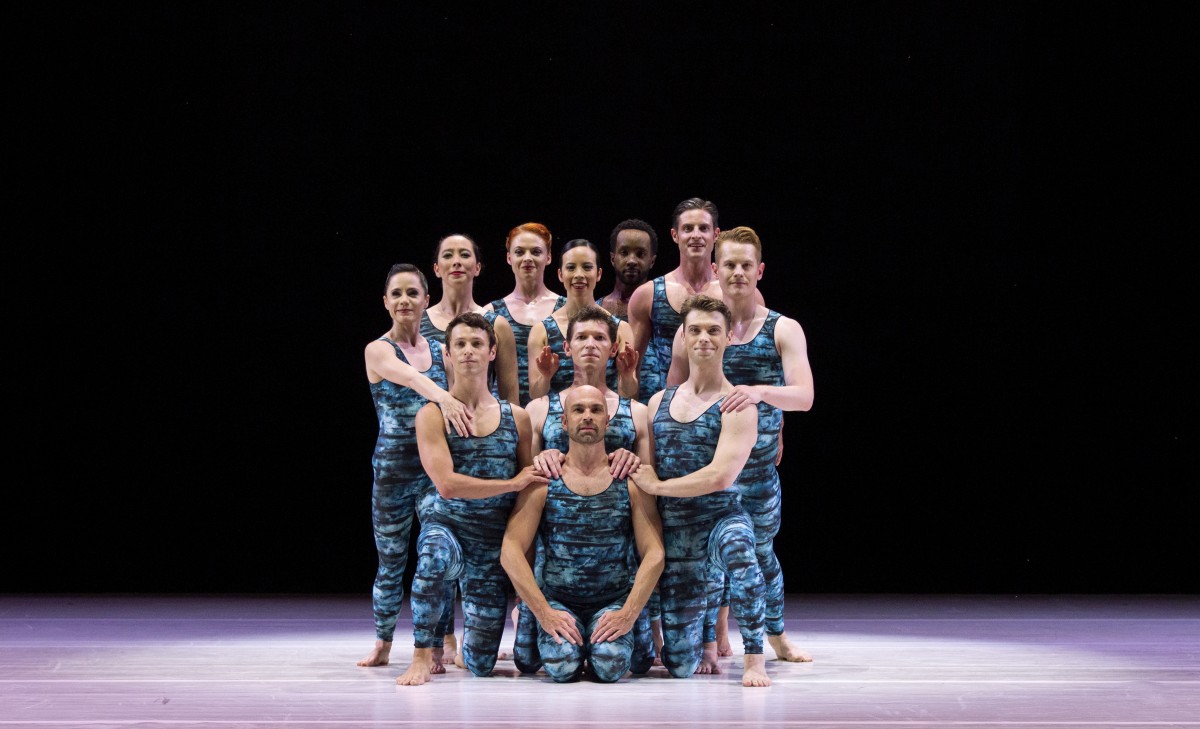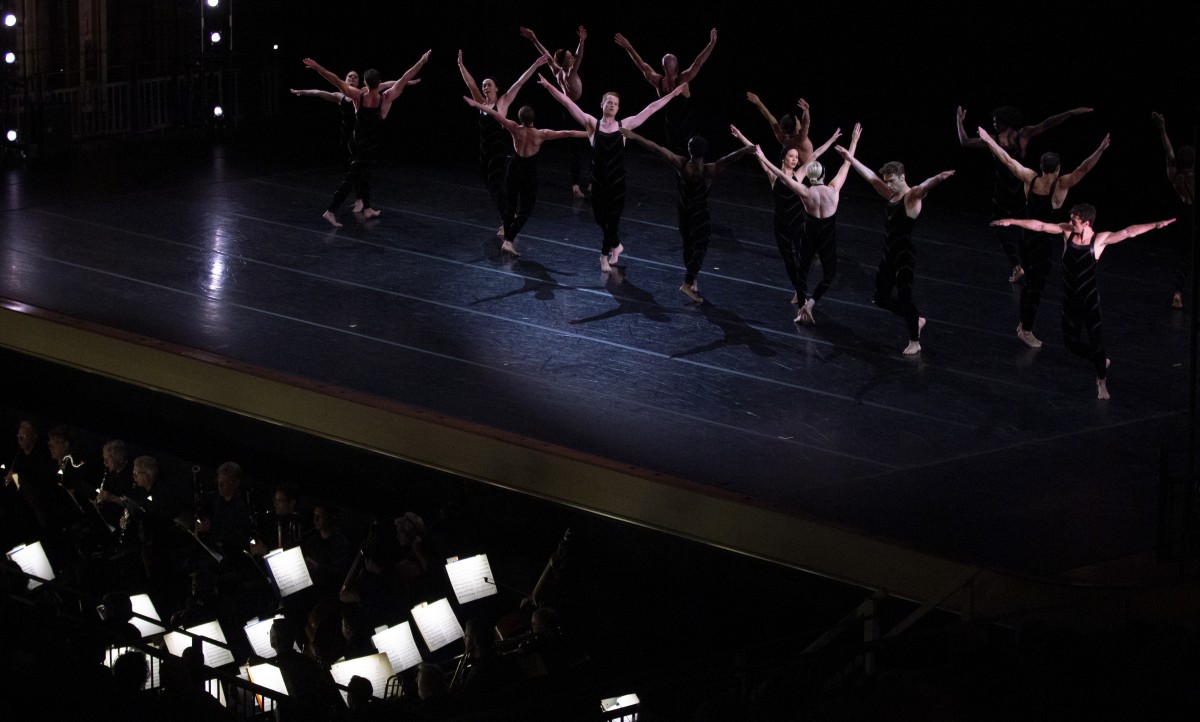Review by Jane Vranish:
It was good to see such a monumental pairing of music and movement last Saturday night at the Amphitheater, a match that became epic in so many ways.
There hasn’t been such a grand partnership within recent memory, so difficult, yet ultimately satisfying for both the Paul Taylor Dance Company and Chautauqua Symphony Orchestra. Even the lighting design, projected onto the organ pipes above the stage, added to the imposing nature of the program.
The three works each had their own epic angle as well, Concertiana being the final work Taylor choreographed before he died Aug. 29, last year; Dust, inspired by a friend who was deaf and mute; and the gargantuan Leopold Stokowski arrangement of Bach’s Toccata and Fugue in Promethean Fire.
But there was a time when Taylor himself was not considered grand. He engendered disrespect from critics who thought his choreography carried little artistic and mental weight. Time has proved them wrong, and a program like this is a living, breathing example.
Concertiana referred to Eric Ewazen’s Concerto for Violin and Strings, which premiered in 2000, by St. Luke’s Chamber Ensemble, currently the live music partner for PTDC in New York City. To further the connection, St. Luke’s concertmaster, Krista Bennion Feeney, performed the virtuosic solo with a sweeping panache, the orchestra in swift pursuit.
The piece itself was a pictorial scrapbook of the Taylor choreographic style, full of sweet memories for the audience. Those who had seen the company performance at the Amphitheater on Aug. 7 could see trademark snippets like the curvilinear arms of “Aureole” and the sitting spins and cradle lifts from Esplanade.
Was this a nod to the creative process, the need for the choreographer to focus despite the numerous distractions that surround it? One could see lovely solos and duets to savor, but broken by a flurry of group activity consuming the stage.
Then there were many linear elements, such as repetitive jumping and running across the back, that periodically drew the eye upstage. On closer inspection, Taylor was making minimal adjustments, like turning one dancer around mid-stage and varying the speed of it all.
Yet each of those seemingly minute details was lovingly executed, making it apparent that the dancers will always cherish this work.
Dust (1977) posed a number of questions because it was a piece full of conflicting emotions. The score itself was reflective of Francis Poulenc’s youthful glee in its quirky, almost haphazard changes of mood and rhythm. Schuyler Robinson took on the harpsichord solo, often a mad dash through a musical obstacle course, with superb athletic abundance. Again, the orchestra was in full support mode, led with customary authority by conductor Rossen Milanov.
Inspired by those with disabilities, the movement could have been perplexing to the viewer. With the performers clad in nude bodysuits embellished by “lesions,” it became monkey-like, awkwardly itchy, painfully grabbing, with parts of the body deliberately askew. One section saw a woman overwhelmed by “blind” dancers, something that subsequently affected her as well. It sometimes invoked a chuckle or two, followed by a momentary sense of shame.
Dust then began to fall apart with an outburst of acrobatics and crazed runs. All of a sudden, the dancers looked up as a bright white light bathed the stage, perhaps in reference to the thick rope that dangled at the side. Although they never acknowledged it, the rope could have been a symbol of reaching beyond one’s limits, whether physical, mental or personal.
That connected in some ways to Promethean Fire (2002). In the piece, many have seen the aftermath of 9/11, with airplane lifts and architectural groupings, although Taylor himself denied this. Clad in somber black unitards, the dancers evoked the pace of a city as they scurried through ever-changing patterns. One ended up in a giant letter “S” where, one by one, the dancers threw themselves to the ground.
Nonetheless it will remain an everlasting gift to the resilience of New Yorkers and specifically this company. For at the center of Promethean Fire was artistic director/dancer/historian Michael Novak, whose eyes burned bright with hope and purpose as he rose from the “rubble” section of the choreography. It was as if he was shouldering the responsibility to carry the company forward into the future.
Yet all of the Taylor dancers will undoubtedly participate, for they all harbored what might be termed a “secret joy.” It was one that oozed from Taylor’s impressive choreography, one that they subsequently shared on stage and one that permeated Chautauqua all week long. In the end, it was apparent that this was a singular event, which even company manager Bridget Welty admitted was “special.”
In other words, this residency has not been seen, nor will it be seen anywhere else in the near future, although it should be for all benefits that it bestows.
This seminal week took Chautauquans on a meaningful journey, much like an extensive Picasso exhibit at New York’s Museum of Modern Art would, enabling the community to appreciate this modern master.
Maybe Promethean Fire was not just about the America we all want, but also about a company that will give us what we all need.
Jane Vranish is a former dance critic for the Pittsburgh Post-Gazette and continues there as a contributing writer. Her stories can also be read on the dance blog “Dance Currents” at dancecurrents.com. She is an assistant professor of dance at Point Park University.







